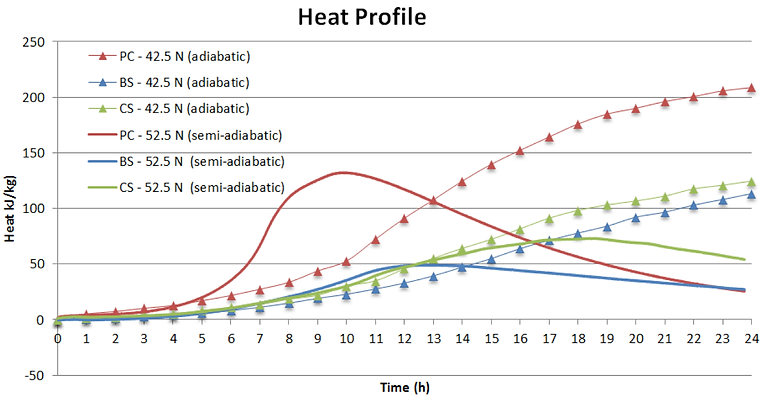

Cementitious Calorimetry
An investigation into the thermal properties of Corex slag and the relationship between thermal profiles and setting times
Kyle Cullen van der Westhuizen - 4th year Dissertaion - CIV4044S
The quantity of heat generated over time was assessed against the heat profiles developed by Alexander et al. (2003) for mixtures of similar constituents. Although the heat profiles developed by Alexander et al. (2003) differ by the following:
-
Cement pastes were measured as opposed to concrete mixtures
-
CEM I 52.5 N was used as opposed to CEM I 42.5 N
-
A lower w/b ratio was used
-
The calorimetric system used was classified as semi-adiabatic as opposed to 'fully' adiabatic
-
Smaller volume samples were measured
The heat profiles and heat rate profiles of the experimental mixtures were plotted together with the results found by Alexander et al. (2003) and are presented below.
COMPARITIVE ANALYSIS

Profile comparison between CEM I 42.5N and CEM I 52.5N with slag addition (GGBS and GGCS), measured by fully adiabatic calorimetry and semi-adiabatic calorimerty respectively*

*Note: The CEM I 42.5 N heat profiles were extracted from Research Monograph no. 6 (Alexander et al., 2003) for the first 24 hours and the heat rates were approximated by numerical differentiation of the heat curves developed.